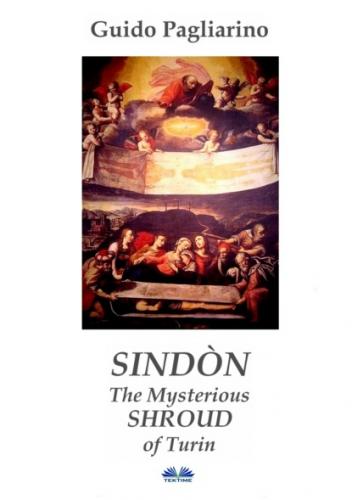Since there are no definite documents to corroborate that the cloth in Constantinople actually was the Shroud of Turin, we have an historical gap until 1536 when, as we will see, it was definitely in Lirey, France. Nevertheless, a miniature, not properly a document, was found in the Pray Codex, a collection of manuscripts dating to A.D. 1192-1995 and currently kept in the National Library of Budapest.
It is a sacramentary written in Latin which includes a funeral sermon in Hungarian (it's the oldest text in this language). The Hungarian Jesuit Georgius Pray (who gave the name to the Codex) discovered the artifact in Slovakia in the library of the Benedectine monastery of Pozsony, currently Bratislava, in the 18th century. The Pray Codex is an handwritten (in the 12th century the printing press had not been invented yet). The miniature we are interested in, composed by two overlapping illustrations, is on the back of the sheet number XXVII, and shows the entombment of Jesus. The upper image depicts the anointing of Jesus' body, entirely naked just like in the image of the Shroud of Turin (this is a specificity compared to the contemporary and earlier icons); moreover, the arms are crossed on the pelvis, the right on the left, and the thumbs and the feet are not visible, everything again like on the Shroud (see the following paragraph Why are the thumbs not visible on the Shroud? Why is his right foot covering his left one in the positive photographic image?). On the pictures below, hands and lower extremities details on a Shroud negative image, and the Pray Codex:
Pray Codex miniature
The miniature's upper illustration shows the body of Christ lying on a sheet while being anointed; and the lower image represents the pious women visiting the sepulcher on Easter Sunday, bringing oils for the corpse who, however, was no longer there because of the resurrection, as the angel proclaimed:
When the Sabbath was past, Mary Magdalene, Mary the mother of James and Salome bought spices, so that they might go and anoint him. And very early on the first day of the week, when the sun had risen, they went to the tomb. An they were saying to one another: “Who will roll away the stone for us from the entrance of the tomb?”. And looking up, they saw that the stone had been rolled back – it was very large. And entering the tomb, they saw a young man sitting on the right side, dressed in a white robe, and they were alarmed. And he said to them: “Do not be alarmed. You seek Jesus of Nazareth, who was crucified! He had risen, he is not here. See the place where they laid him. But go, tell his disciples and Peter that he is going before you to Galilee. There you will see him, just as he told you”. And they went out and fled from the tomb, for trembling and astonishment had seized them, and they said nothing to anyone, because they were afraid. (Mark, 16, 1-8).
On the miniature again, there is a zigzag pattern on the sheet which resembling, according to some but not for me, the Shroud's herringbone weave. On the bottom illustration, there are two groups of tiny circles to form a letter L, similar to the four groups of four holes each, originated from burns, that can be found on the Shroud of Turin (actually, there are other small holes not clearly visible to the visitors, unlike the larger ones). These symmetrical groups of holes are, approximately, in the middle of the four layers which result from a folding of the Cloth in four.
A detail of the Shroud with highlighting of the four groups of the oldest burns
Closeup of one of the burn groups
A detail of the Pray Codex with the highlighting of two supposed L-shaped holes
It could be that the burn marks had been produced with the Shroud folded in four, and the damage passed through all the sides. The origin of the burns is unknown - perhaps molten metal accidentally dripped -, but we know they are on the Cloth since before the A.D. 1532, when the Chapel of the Shroud in Chambery caught fire (see Chronology, A.D. 1532); in fact, these symmetrical holes are depicted on a printmaking made by Dürer in Chambery in A.D. 1516, reproducing for the first time the whole Shroud:
Printmaking of the Shroud credited to Albrecht Dürer - A.D. 1516 -, one third of the real size of the Shroud, guarded in the church of Saint. Gommaire in Lier, Belgium: the four symmetrical groups of holes are clearly displayed
The question is: did the author of Pray Codex miniature, who expressly states in the text that he was inspired by a shroud, really see the Shroud of Turin so as to be influenced by it?
By the way: please note that the Man's face and head are divided and detached in the printmaking (as a result of the three-dimensional head); in fact, in A.D. 1516 there was not yet on the linen the water stain caused by 1532 Chambery fire extinction (see Chronology) which many people confuse, making a mistake, with the Man's nape.
Water stain
Конец ознакомительного фрагмента.
Текст предоставлен ООО «ЛитРес».
Прочитайте эту книгу целиком, купив полную легальную версию на ЛитРес.
Безопасно оплатить книгу можно банковской картой Visa, MasterCard, Maestro, со счета мобильного телефона, с платежного терминала, в салоне МТС или Связной, через PayPal, WebMoney, Яндекс.Деньги, QIWI Кошелек, бонусными картами или другим удобным Вам способом.
